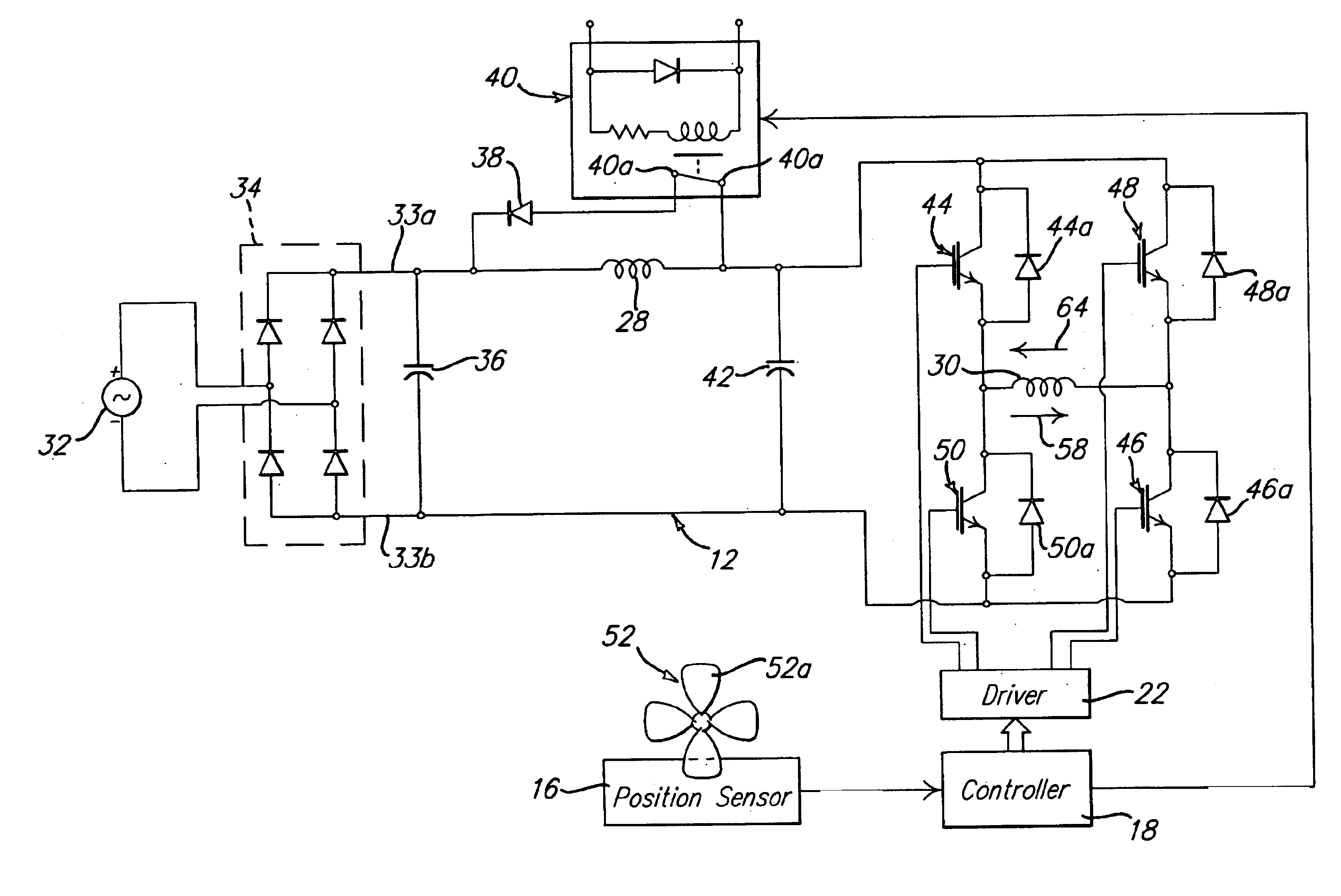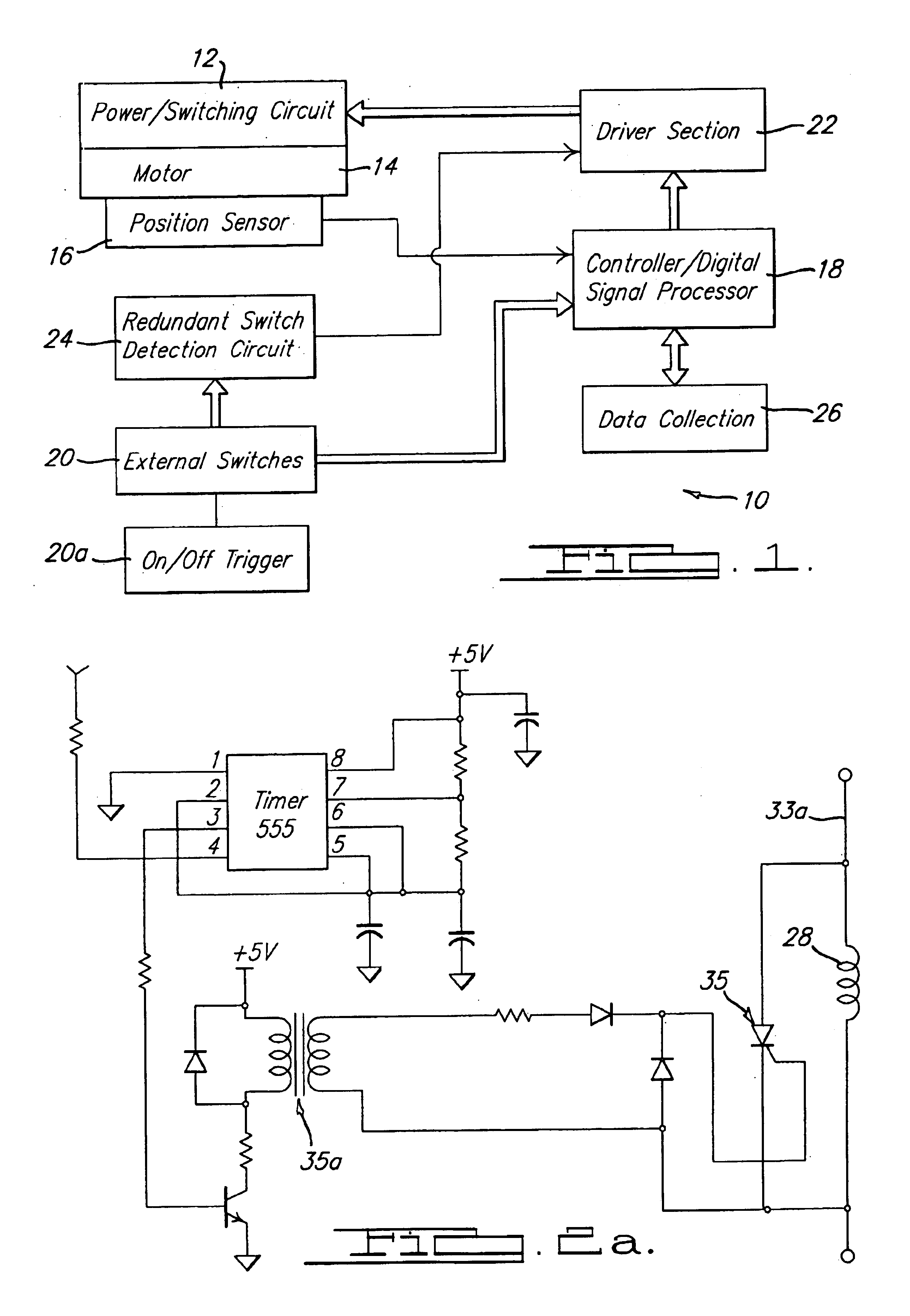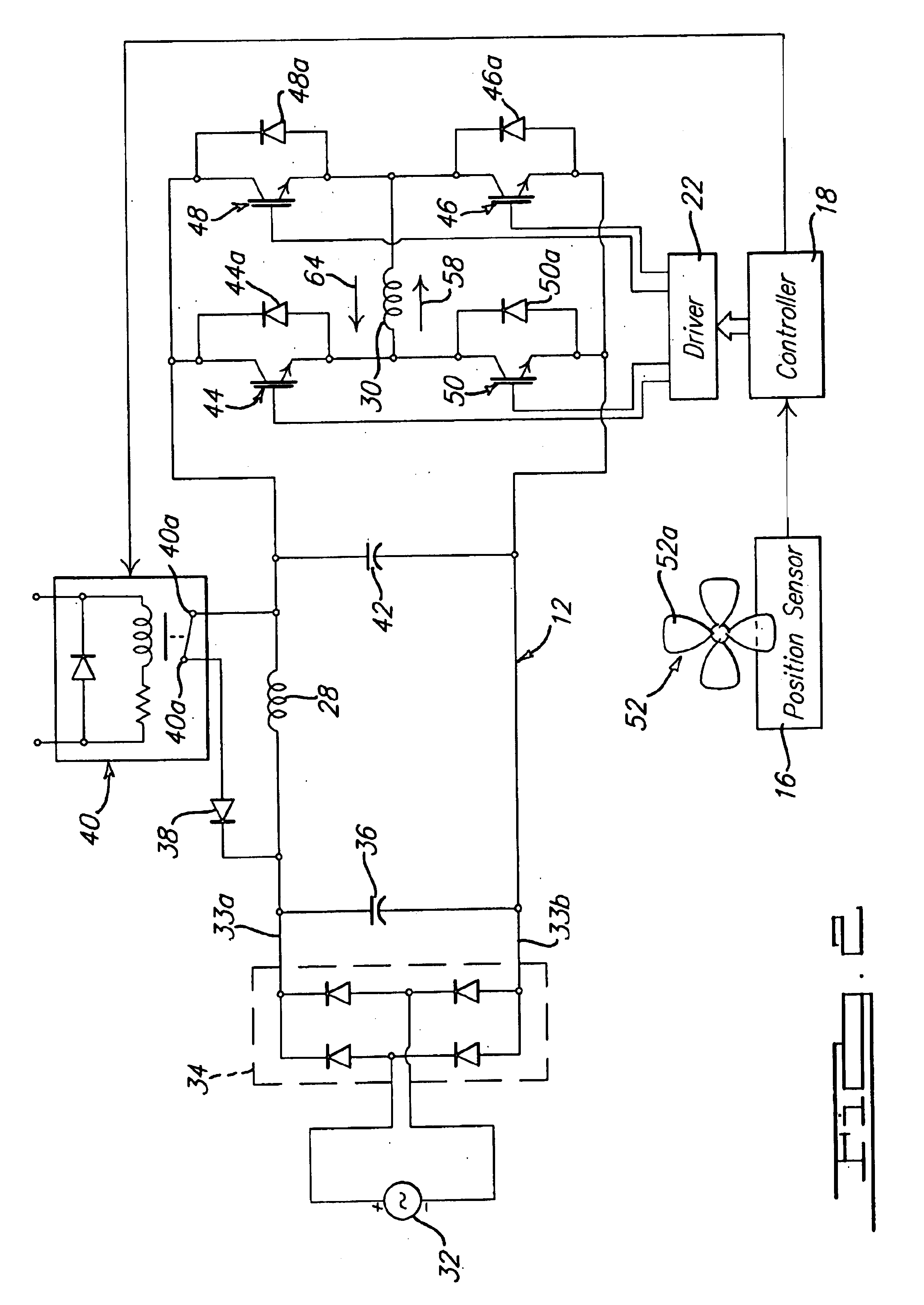Excitation circuit and control method for flux switching motor
a technology of flux switching motor and excitation circuit, which is applied in the direction of motor/generator/converter stopper, electronic commutator control, dynamo-electric converter control, etc., can solve the problems of wasting power, snubbing circuit, and dissipating a fair amount of power, so as to improve the torque/speed performance of the motor
- Summary
- Abstract
- Description
- Claims
- Application Information
AI Technical Summary
Benefits of technology
Problems solved by technology
Method used
Image
Examples
Embodiment Construction
[0029]The following description of the preferred embodiment(s) is merely exemplary in nature and is in no way intended to limit the invention, its application, or uses.
[0030]Referring to FIG. 1, there is shown an excitation system 10 in accordance with a preferred embodiment of the present invention. The system 10 generally comprises a power switching circuit 12 in communication with a flux switching motor 14. The motor 14 comprises a conventional flux switching motor having a stator with a plurality of poles, and in one preferred form a plurality of four poles, a fully-pitched field winding and a fully pitched armature winding. The number of turns of the field and armature windings may vary but in one preferred form the motor 14 comprises a field winding having 40 turns per coil and an armature winding having 20 turns per coil. In one preferred form, the stator has a pair of consequent poles as a result of arranging the armature winding in two parallel portions.
[0031]The motor 14 a...
PUM
 Login to View More
Login to View More Abstract
Description
Claims
Application Information
 Login to View More
Login to View More - R&D
- Intellectual Property
- Life Sciences
- Materials
- Tech Scout
- Unparalleled Data Quality
- Higher Quality Content
- 60% Fewer Hallucinations
Browse by: Latest US Patents, China's latest patents, Technical Efficacy Thesaurus, Application Domain, Technology Topic, Popular Technical Reports.
© 2025 PatSnap. All rights reserved.Legal|Privacy policy|Modern Slavery Act Transparency Statement|Sitemap|About US| Contact US: help@patsnap.com



